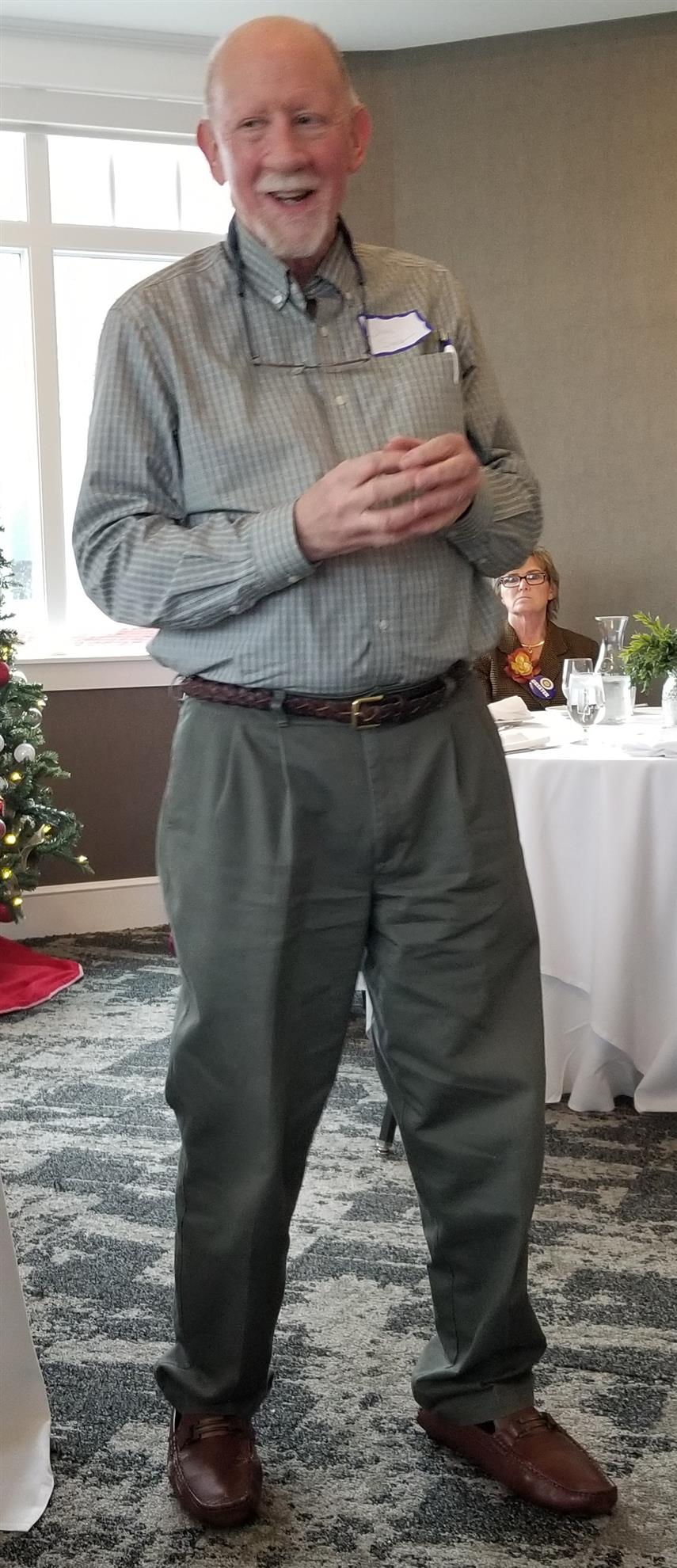Heart Safe Community
 Steve Stegeman, who spent 40 years as a paramedic, is now on the Heart Safe Community board to promote citizen Compression only Cardio Pulmonary Resuscitation (CoCPR) training. He started out by dispelling some myths about citizen assistance.
Steve Stegeman, who spent 40 years as a paramedic, is now on the Heart Safe Community board to promote citizen Compression only Cardio Pulmonary Resuscitation (CoCPR) training. He started out by dispelling some myths about citizen assistance.- Only licensed medical professionals are required to offer assistance to individuals needing aid.
- If you as a citizen are acting in good faith to assist someone in an emergency, you are not liable for any type of legal action against you.
- All 911 operators are trained to walk you through administering CPR and other medical procedures. If you call, you will have assistance.
- The average response time for emergency personnel in the Holland area is 4-6 minutes. A person choking will die within 2 minutes without aid. A severe case of arterial bleeding will die before 6 minutes. And sudden cardiac arrest requires CPR within 2 minutes.
After Steve retired he became a medical examiner investigator. This involved talking to people present when deaths occurred. In almost all deaths there was nothing done to render first aid. If nothing is done for sudden cardiac arrests, the EMTs arriving in the 4-6 minute time will have no chance of saving the person.
Heart attacks are characterized by sweating, radiating pain, and breathing difficulty. If these symptoms occur, you need to call 911 and put the person into a position where they are most comfortable.
There are about 1,000 sudden cardiac arrests a day in the US. This can happen among young people. Cardiac arrest can happen because of electrical disturbances that cause your heart to stop or not pump blood. It can also happen because of a blow to the chest at the time when the heart is empty of blood. The current preferred method for assistance is CoCPR. Only 5% of the population is currently trained. The Heart Safe Community has set a goal to have 15% of the population trained.
How to Respond to Sudden Cardiac Arrest (SCA)
A person experiencing SDA will drop to the floor or whatever surface (table, chair, etc.) they are near. Their eyes will be open because they are now clinically dead. To treat them you need to lay them down on their back and follow the 3 Cs.
- Check - Try to get a response from the person by talking to them and rubbing their chest.
- Call - yell for someone to call 911 and to get an AED, if there is one.
- Compress - start chest compressions with the lower part of your palms in the middle of the chest at a rate of 100-120 compressions per minute.
Chest compressions need to push the chest down by 3 or more inches in an adult to make sure the heart is compressed. You will crack the cartilage in the middle of the chest.
Steve had an AED to show us. When you power up an AED it starts giving you verbal instructions about how to attach the defibrillator pads, whether the heart needs to be shocked, and how to perform chest compressions.


Jay Peters and John Shea told their story. Jay had a 2-hour training session in first aid that included CoCPR training. He felt the training was very easy to understand. Jay was driving and John was riding in a truck when John had an SDA. Jay recognized what was happening because of his training, stopped the truck, pulled John out, called 911, and started CoCPR. John says that it was just like he fell asleep in the truck and woke up after the heart surgery. Everyone at the hospital told him that having someone perform CPR saved his life.

.png)